
By mid-week 155 firefighters will have deployed from the United States to assist with the fires in Australia, including a group of 71 (61 from the U.S. and 10 from Canada) that is expected to arrive Wednesday.

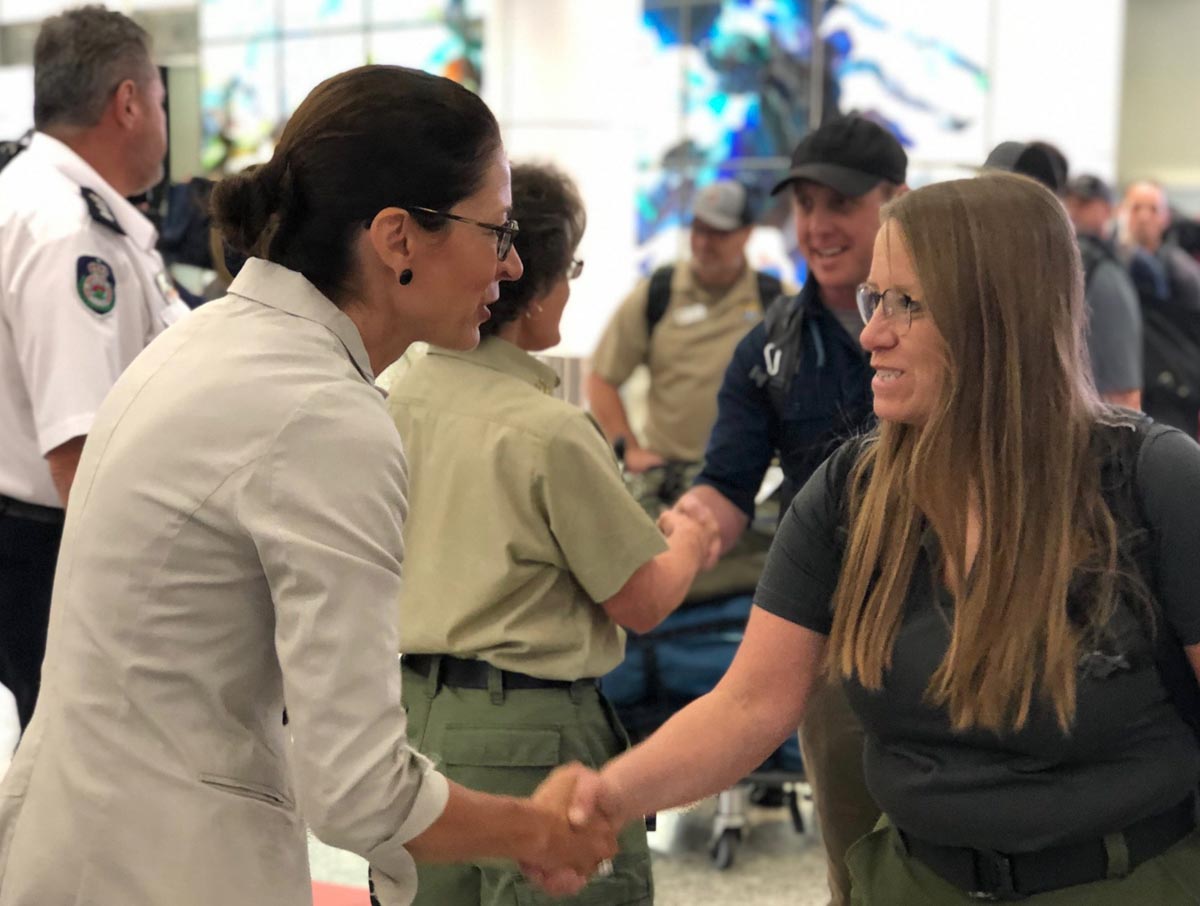
News and opinion about wildland fire

By mid-week 155 firefighters will have deployed from the United States to assist with the fires in Australia, including a group of 71 (61 from the U.S. and 10 from Canada) that is expected to arrive Wednesday.


The two ships unloaded their passengers at Hastings near Melbourne on Saturday
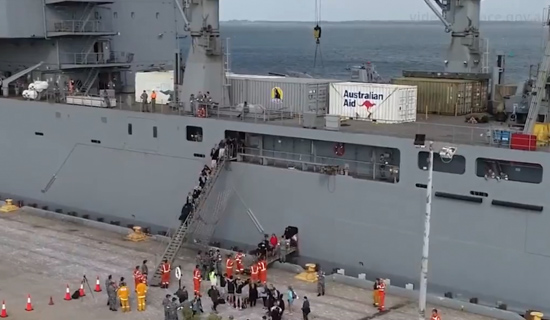
Over 1,000 people who were forced by the bushfires in Australia to take refuge on coastal beaches have been rescued by the Navy and transported to the Melbourne area. Friday morning the evacuees at Mallacoota in northeast Victoria were moved from the community center to the pier by buses and then transported to ships using five landing craft.
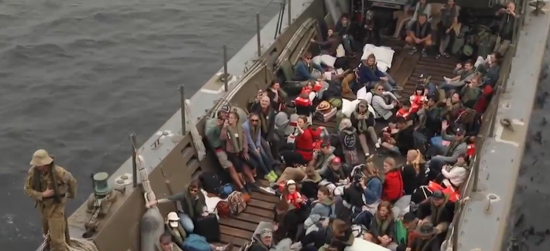
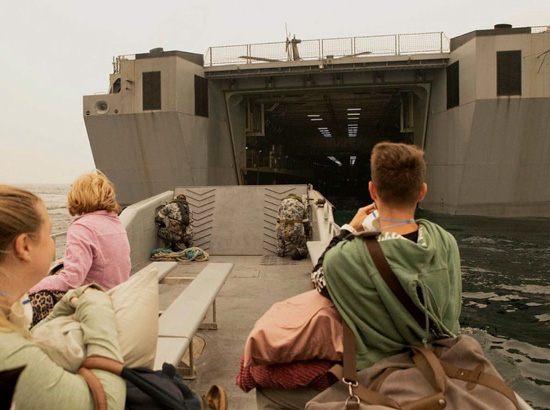
Two ships took part in the mission. The smaller of the two was the MV Sycamore, a 308-foot 2,400-ton training ship first launched in 2016. It normally operates with a 22-person crew, can accommodate up to 71 Australian Defense Force personnel overnight, and has a multi-use space which can be configured to help cope with disasters. The Sycamore picked up 58 evacuees at Mallacoota on the northeast coast of Victoria and transported them on a 20-hour voyage about 320 miles to Hastings near Melbourne.
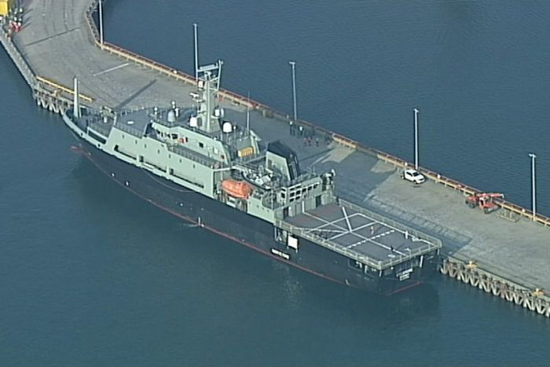
The HMAS Choules is much larger than the Sycamore — 579 feet and 16,160 tons. It is classified as an “auxiliary landing ship logistics”, designed for hauling cargo. It operates with a 158-person crew and can carry 32 M1A1 Abrams tanks or 150 light trucks. According to Wikipedia it can transport 700 soldiers “in overload conditions.” On Friday it loaded 1,025 evacuees at Mallacoota and took them on the same 20-hour voyage to the Melbourne area. Army staff on the ship served approximately 3,500 meals during the trip.
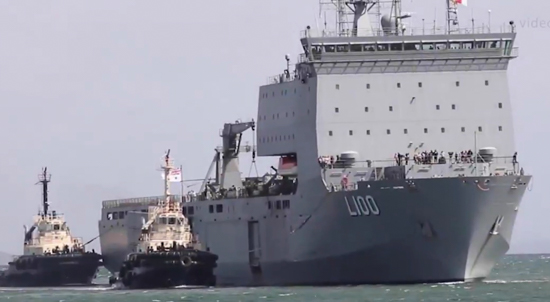
Both ships docked at the Port of Hastings Saturday and the passengers were transferred to a disaster relief center at the Melbourne convention center. They brought with them 135 dogs and several cats.
Evacuees who were very sick were flown from Mallacoota on Blackhawk helicopters.
In interviews with the Australian Broadcasting Corporation and the Department of Defense, the evacuees spoke glowingly of how they were treated by the crews on the ships. A 16-year-old girl who had just disembarked from the Sycamore said, “It was so comfortable on the ship. The crew was amazing, food amazing, the beds — perfect. I’m very thankful for it.”
The two ships were scheduled to return to Mallacoota.
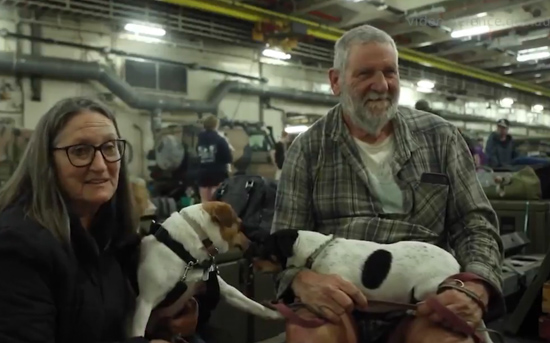
More air tankers from North America will be be sent to Australia

Two people were found dead on Kangaroo Island south of Adelaide, South Australia.
From the Australian Broadcasting Corporation:
An experienced pilot and his son have been killed in catastrophic bushfires that have ravaged more than a third of Kangaroo Island and destroyed homes and businesses. The family of tour operator and aviator Dick Lang has confirmed he perished in the blaze, along with his youngest son Clayton — a leading plastic surgeon who specialised in hand surgery. Dick Lang, 78, ran his own flight adventure business out of Adelaide Airport and was described as one of the nation’s “best bush pilots”.
Dick Lang lived and worked in the outback for most of his life, securing him the nickname ‘Desert’. His 43-year-old son was supervisor of surgical training at the Queen Elizabeth Hospital, his family said. Dick Lang had flown rescue operations in desert regions and over Papua New Guinea.
“He loved the bush, he loved adventure and he loved Kangaroo Island,” his family said.
“Dick and Clayton were prominent members of the South Australian community who rose to the top in their chosen professions.”
Police said the men died on the Playford Highway in the centre of the island, and that one of the victims was found inside a car.
In a statement, the Lang family said the men were returning to the family property on Kangaroo Island January 4 after fighting a nearby fire for two days.
This brings the death toll in the Australian fires up to 23 people, which includes three firefighters.
High humidities and a 2.5mm of rain Saturday morning slowed the spread of the Ravine Fire on Kangaroo Island. South Australia’s Country Fire Service said the two major fires on the island have burned more than 170,000 hectares (420,000 acres) which is 39 percent of the 88-mile long island. Many structures have burned or been damaged, including Kangaroo Island’s Visitor and Information Center, the KI Wilderness Retreat, and Hanson Bay Wildlife Sanctuary. The Premier, Steven Marshall, said all buildings in the island’s Flinders Chase National Park had been “very extensively” damaged. It has been confirmed that the Southern Ocean Lodge, the high-end resort on the southwest coast that charges over $1,000 a night, suffered severe damage.
The bushfires in Victoria and New South Wales continue to spread and force residents and vacationers from homes and resorts.
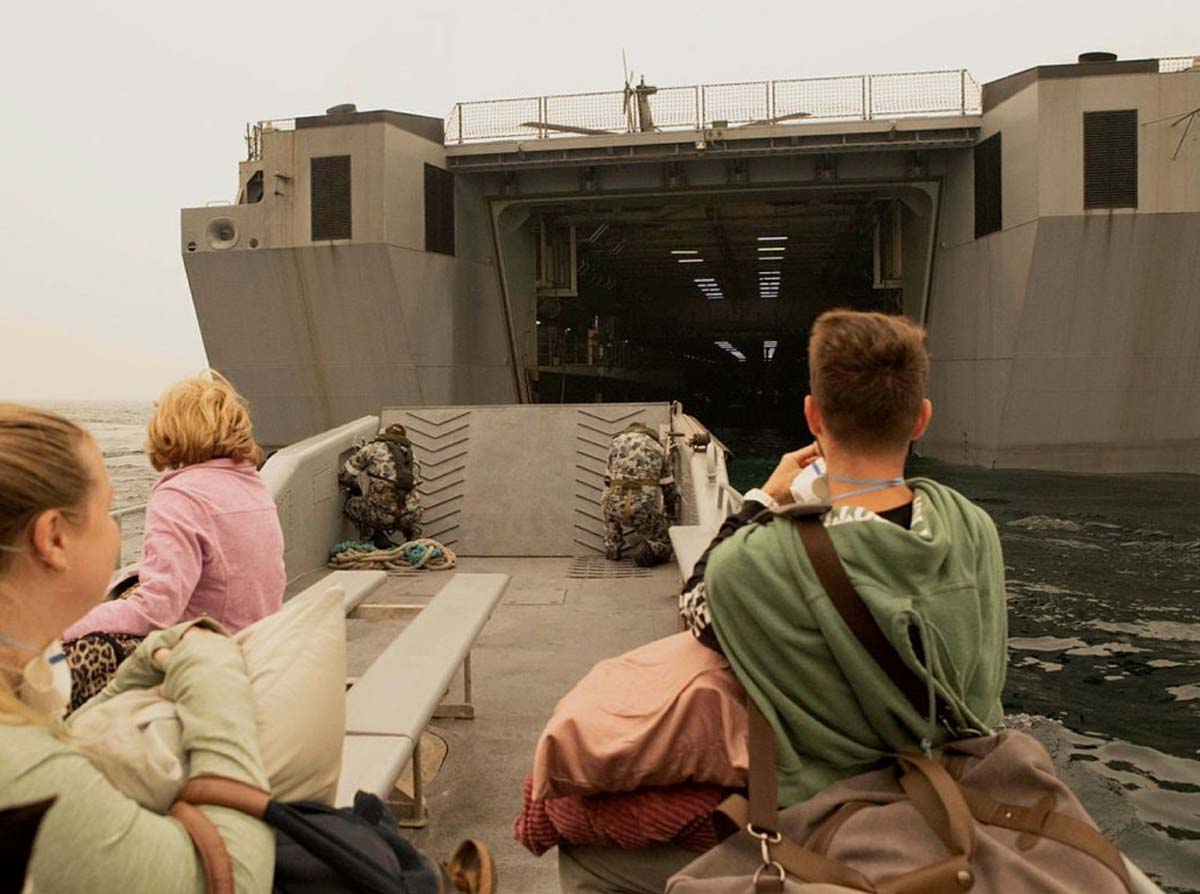
Naval vessels are being used to rescue those who were forced to flee to the coastal beaches. Small boats are ferrying them out to a ship in deeper water where those who are willing and able have to climb a ladder up to the much larger vessel built to carry 300 soldiers and 23 tanks. It is expected the ship will transport about 800 evacuees. Those who can’t board the ship and still want to leave, may be removed from the burnt-over area by helicopters, but visibility degraded by smoke could make flying difficult.
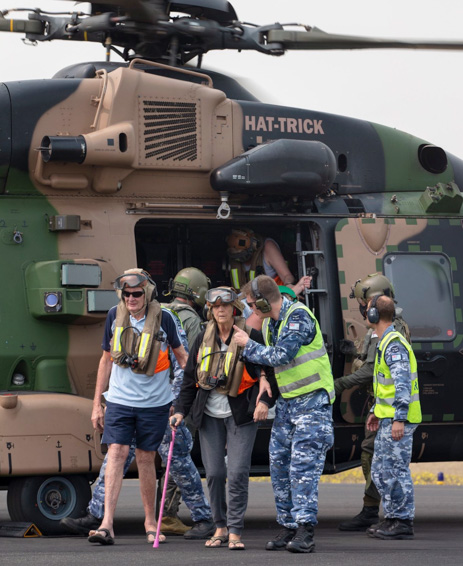
In addition to the ships and helicopters being used for evacuation the New South Wales Rural Fire Service Commissioner Shane Fitzsimmons was blindsided upon finding out from the media that Prime Minister Scott Morrison announced Saturday afternoon that 3,000 ADF reservists would be brought in to help with bushfire recovery efforts and $20 million would be provided for leasing four additional firefighting aircraft. Defense Minister Linda Reynolds said it was the first time that reservists had been called up “in this way in living memory and, in fact, I believe for the first time in our nation’s history.”
John Gould, President of 10 Tanker, said their company will be sending two more DC-10 Very Large Air Tankers to Australia as soon as the heavy maintenance presently underway is complete. He expects Tanker 912 to arrive in Australia on January 15 to be followed 10 days later by Tanker 914. They will join Tanker 911 that arrived in November. The DC-10 can carry up to 9,400 gallons of water or retardant.
From ABC:
Mr Fitzsimons said while he was thankful for the support, logistics would be complicated.
“I was disappointed and frustrated in the middle of one of our worst days with massive dislocation and movement of people,” he said. “I had my conversations with the Prime Minister’s office.”
As predicted, the weather Saturday in southeast Australia was hot, dry, and windy, setting temperature records in several locations — 120F degrees in Penrith and 111F in Canberra..
They were taken on a flight from Canberra to Melbourne
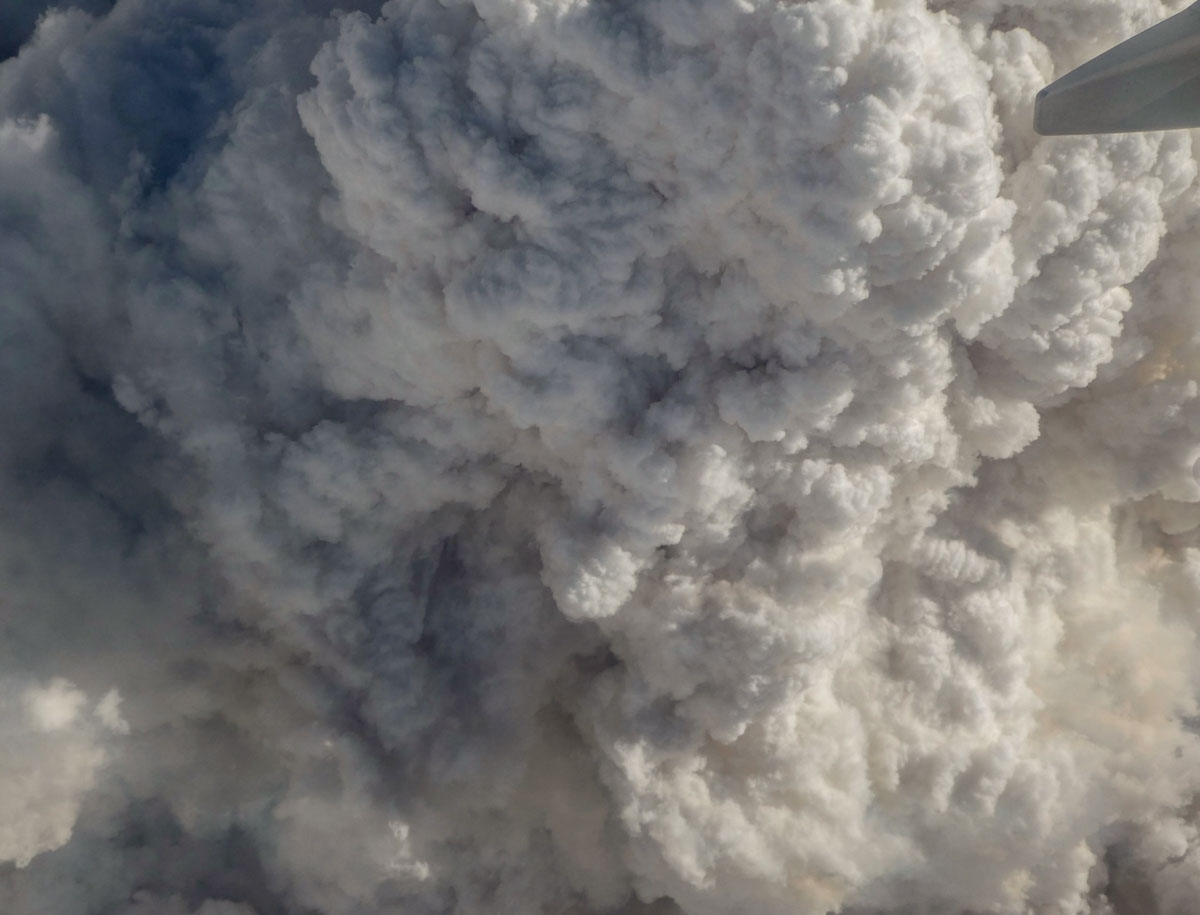
While on a flight from Canberra to Melbourne Merrin Macleod had an excellent view of pyrocumulus clouds over very active bushfires. She said on Twitter, “The country looks like ten or fifteen volcanoes have gone off.”
If the pilot had taken the most direct route to Melbourne they would have flown over many very active fires. The photos are used here with her permission.

Below is actual flight path for her 50-minute flight. About 16 minutes after takeoff the aircraft was 36,000 feet over the NSW/Victoria border.


A pyrocumulus cloud is produced by the intense heating of the air over a fire. This induces convection, which causes the air mass to rise to a point of stability, where condensation occurs. If the fire is large enough, the cloud may continue to grow, becoming a cumulonimbus flammagenitus which may produce lightning and start another fire.
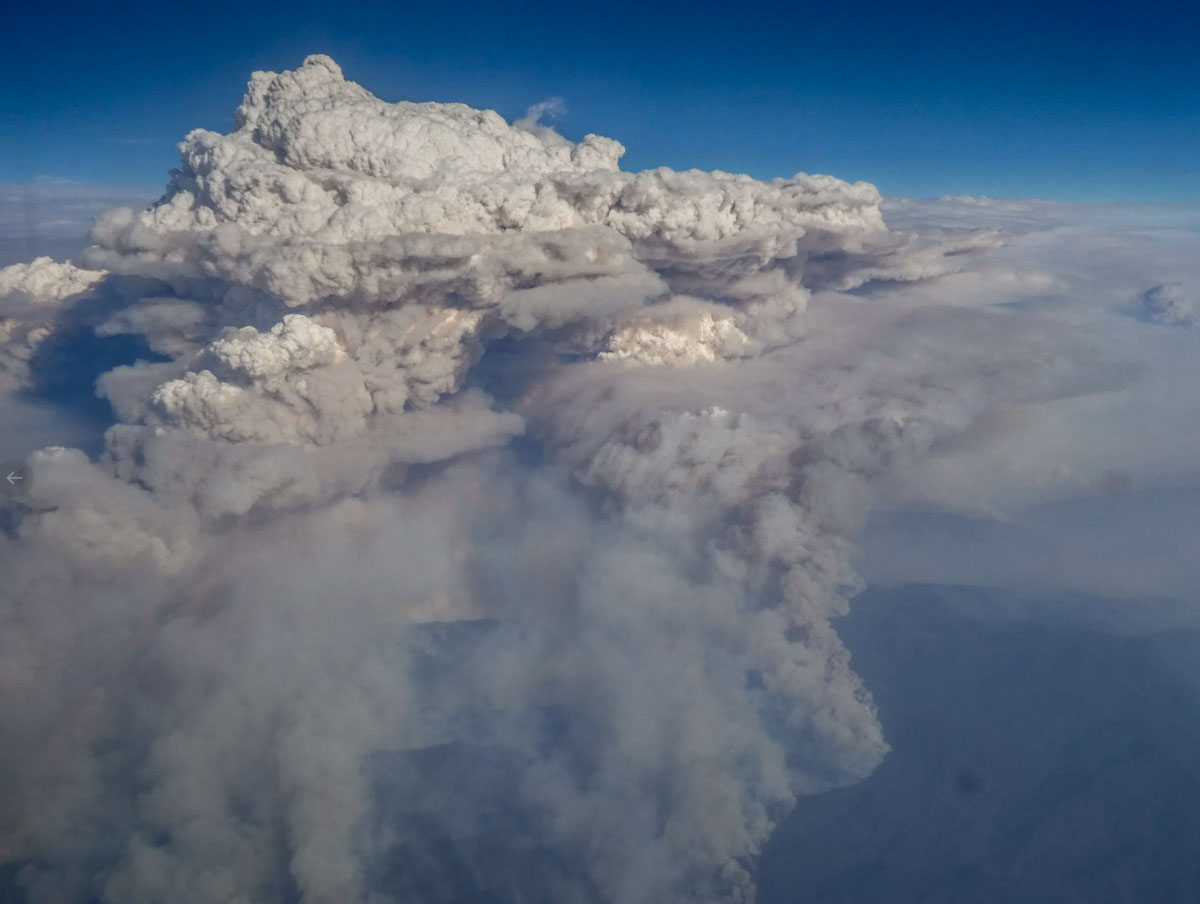
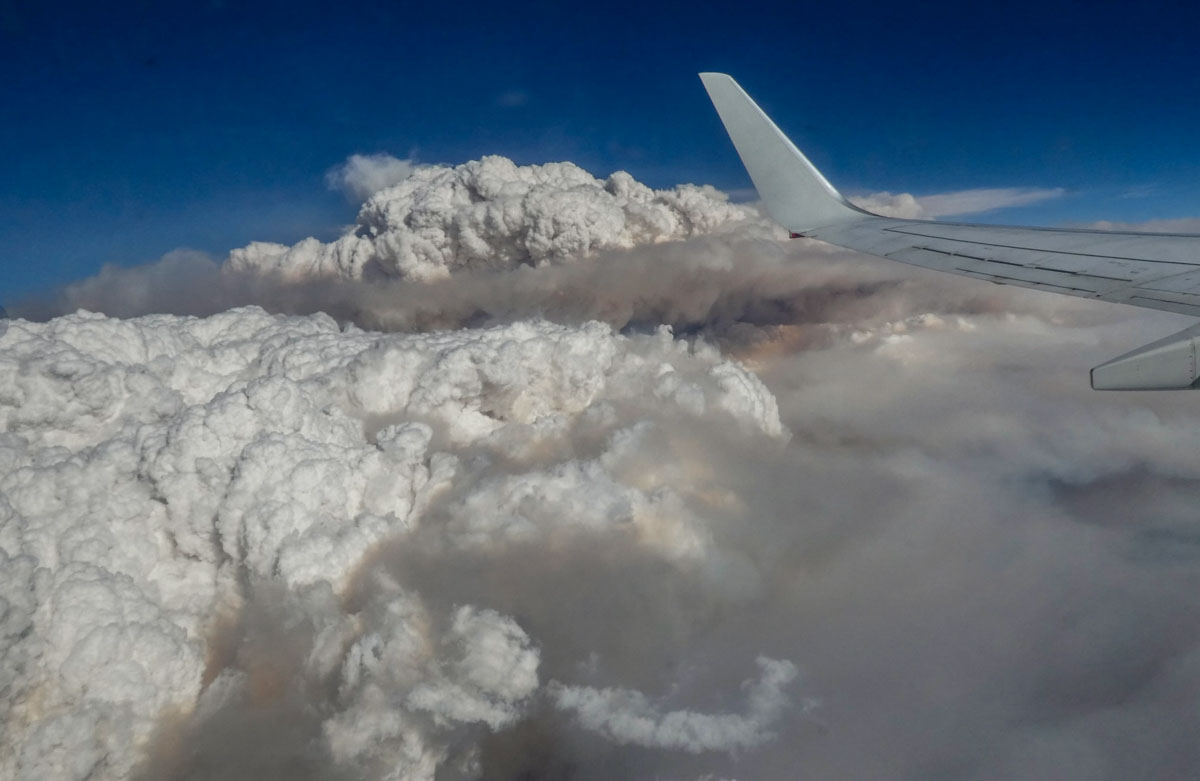
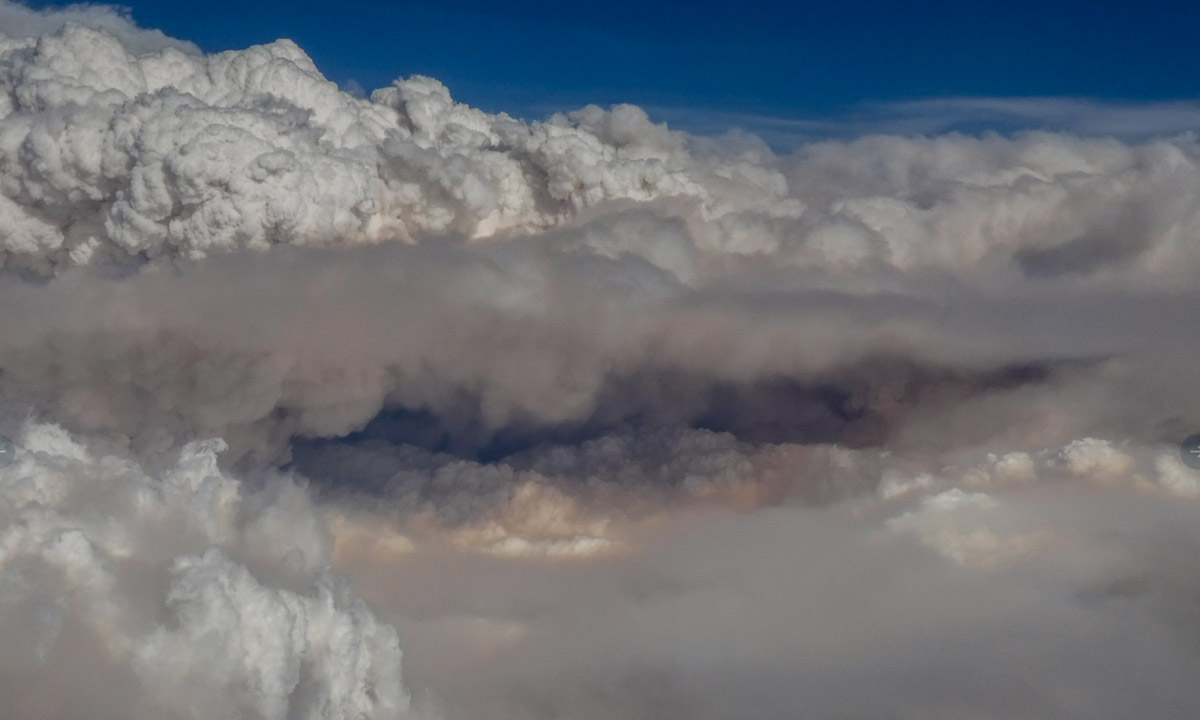

This was over Blowering pic.twitter.com/gf63vviFSx
— Merrin Macleod (@merxplat) January 4, 2020
More will depart on January 4 and 6
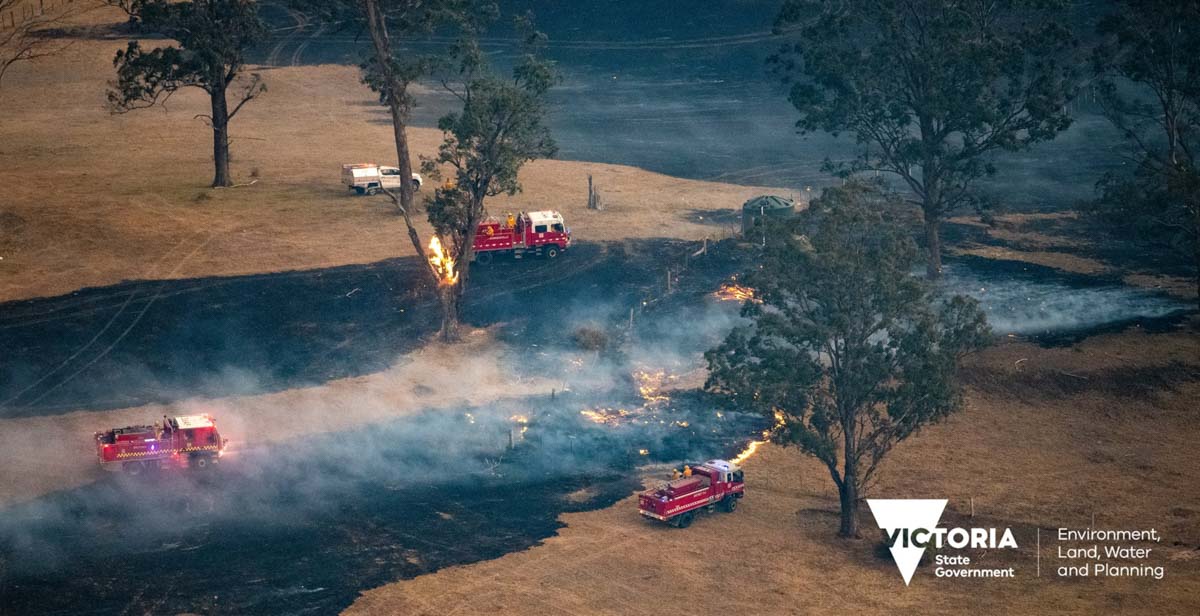
The United States is sending additional U.S. Department of the Interior (DOI) and U.S. Forest Service (USFS) personnel to assist with wildfire suppression efforts in Australia.
Based on requests from the Australian Fire and Emergency Service Authorities Council, the U.S. has intermittently deployed more than 74 wildland USFS and DOI fire personnel throughout December with another 21 USFS and DOI personnel planning to depart for Australia on January 4.
The Council has also requested a fifth group of personnel and the DOI and USFS are currently working on the logistics to send those individuals as soon as possible. It is expected that approximately 55 to 60 firefighters will depart around January 6; some will be hand crew members and others will fill specific overhead positions. About 20 of those will be from the Angeles National Forest in Southern California. This would bring the total number of fire personnel deployed from the United States up to about 155.
The U.S. firefighters are filling critical wildfire and aviation management roles in New South Wales and Victoria. Before this planned fifth wave, all of the firefighters from the U.S. have been ordered to fill overhead positions, not on-the-ground fire crew members. So far no equipment, such as fire engines, has been requested.
In the United States the protocol is for requests for international firefighting assistance to be first filled by federal agencies. According to the California Department of Forestry and Fire protection, if the federal agencies can’t fill the requests, state agencies will be next in line.
Canada is also sending fire personnel to Australia. A fifth group is scheduled to depart for Victoria January 6, thus bringing the total number of Canadian personnel to 95. These latest deployments will then replace the first group of 21 that left for Australia December 3.
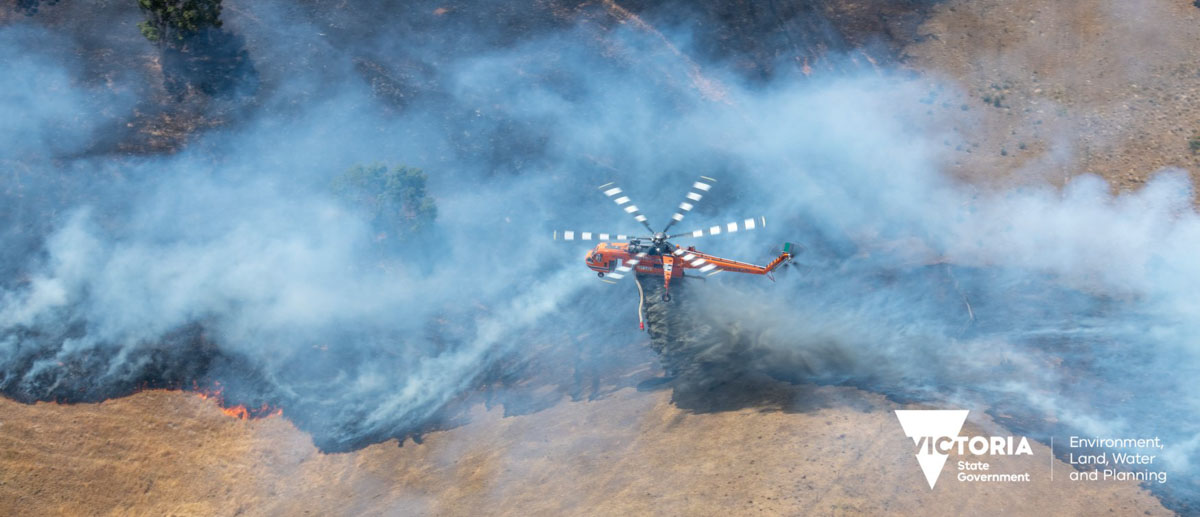
Six large privately owned fixed wing air tankers from North America are under contract to assist firefighters in Australia during their 2019-2020 bushfire season.
“As the extreme fire danger continues across Australia, the U.S. Department of the Interior will continue to do all that we can to support requests for assistance,” said Department of the Interior’s Office of Wildland Fire Deputy Director Craig Leff. “Our focus remains on helping the people of Australia and keeping people safe in these unprecedented conditions.”
The U.S., Australia, and New Zealand have been exchanging fire assistance for more than 15 years. Before the current fire season in Australia the most recent exchange occurred in August of 2018, when 138 Australian and New Zealand wildfire management personnel were sent to the U.S. for almost 30 days to assist with wildfire suppression efforts in Washington, Oregon, and California. The Australian and New Zealand personnel filled critical needs during the peak of the western fire season for mid-level fireline management, heavy equipment, helicopter operations, and structure protection. The last time the U.S sent firefighters to Australia was in 2010.
Another international team assigned to Australia. #NSWfires #AustraliaFires #USwithAUS pic.twitter.com/dGxiQYO9mS
— National Interagency Fire Center (@NIFCfire) January 3, 2020
Below is the breakdown of what has been deployed as of January 3, 2020. The information is from National Interagency Fire Center spokeswoman Kari Cobb:
Group 1: Departed 12/7 (21 total)
Group 2: Departed 12/19 (9 total)
Group 3: Departed 12/30 (42 total)
Group 4: Departing January 4 (20 total)
Group 5: Departing January 6 (approximately 55-60 total)
(List not finalized)
Single resources that did not go with the groups, but flew separately. (8 total)
Officials say the only safe areas on the island are the Kingscote and Penneshaw communities
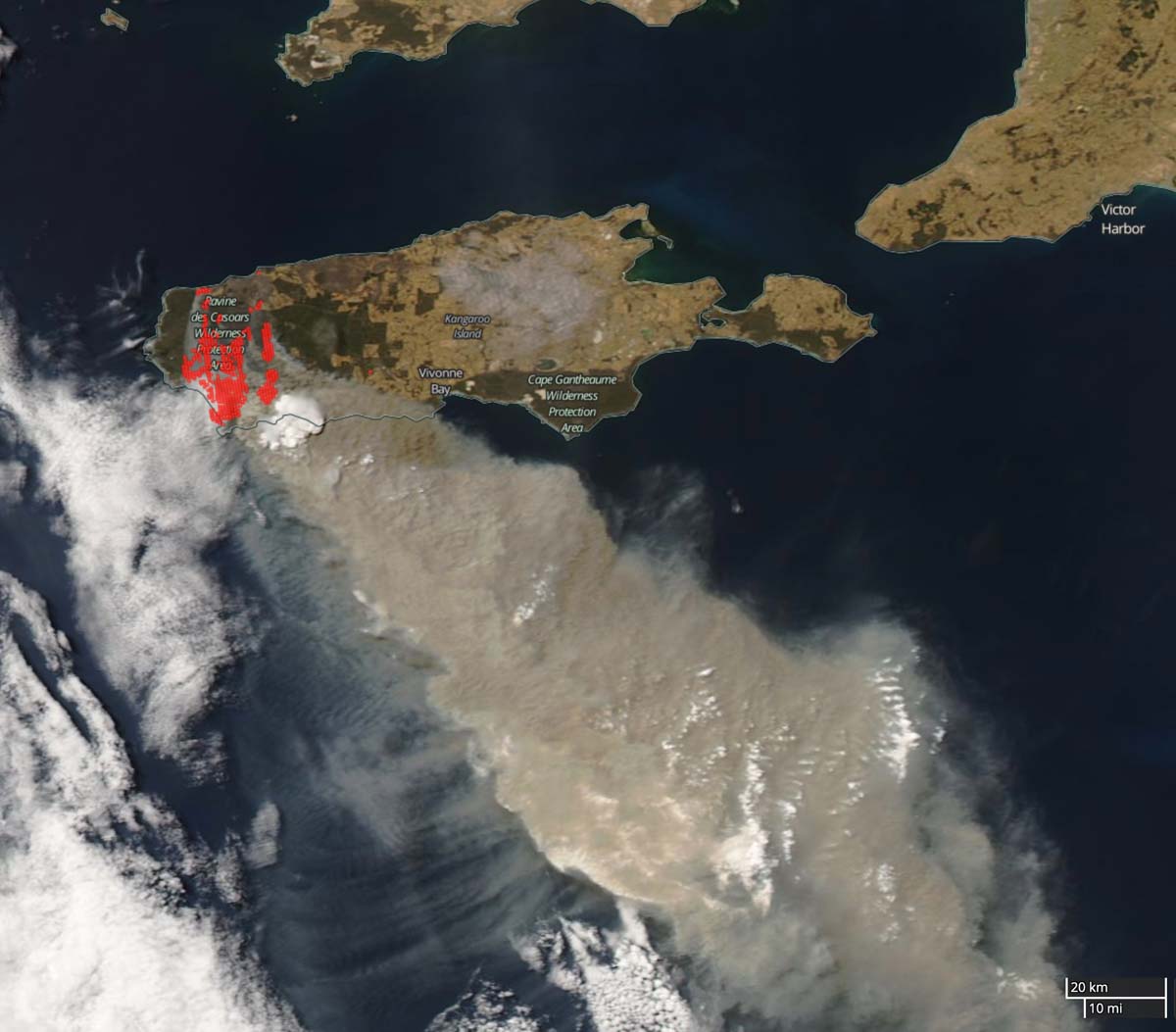
A very large bushfire has burned a considerable portion of the western half of Kangaroo Island south of Adelaide, South Australia. The police say the only safe places from the Ravine Fire are on the east end of the 88-mile long island in the Kingscote and Penneshaw communities.
The island is an 8-mile ferry ride away from the mainland south of Adelaide. The western third is forested and is the location of Flinders Chase National Park, much of which has burned in the fire. There are reports of significant damage to hotels and other facilities in and near the park.
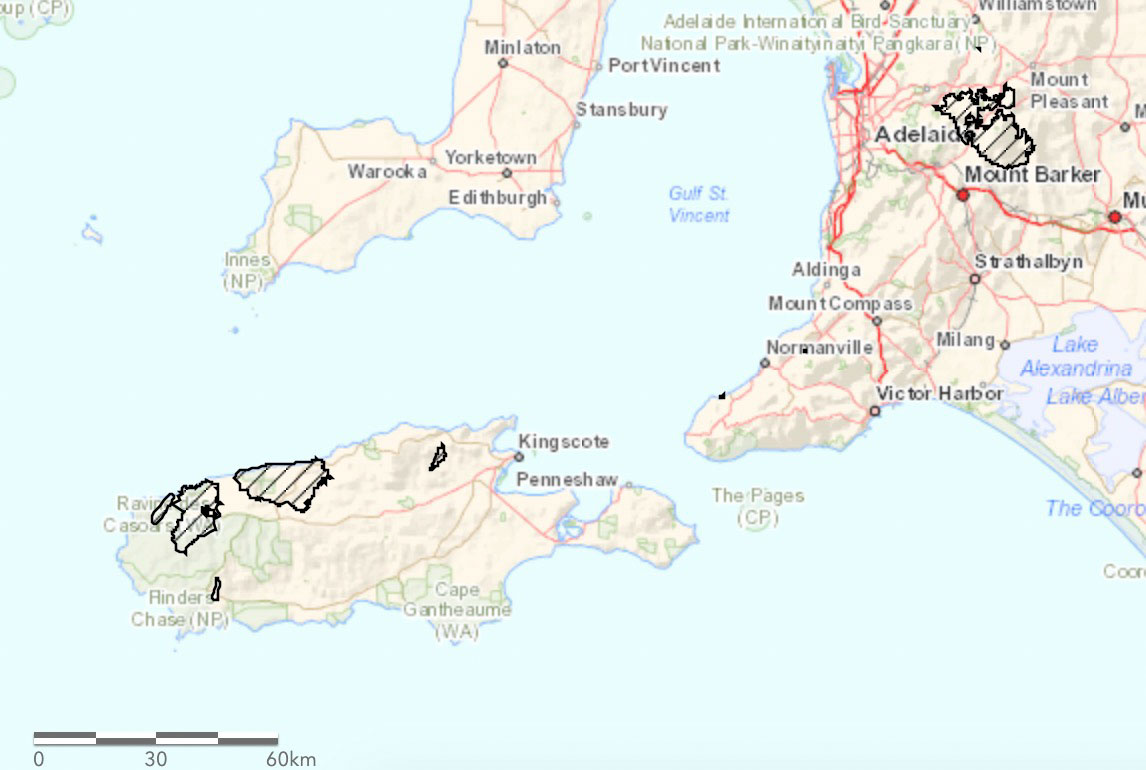
Below is an excerpt from an article at The Islander:
The son of the owner of the cafe at the Flinders Chase National Park has posted this on social media: “For anyone wondering the Flinders Chase Visitor Centre and most surrounding buildings have been burnt down by the fire decimating the west end of the island. To my knowledge many families are now out of a steady income and will require as much assistance as possible, I’m sure the island will accommodate the needs of those suffering.
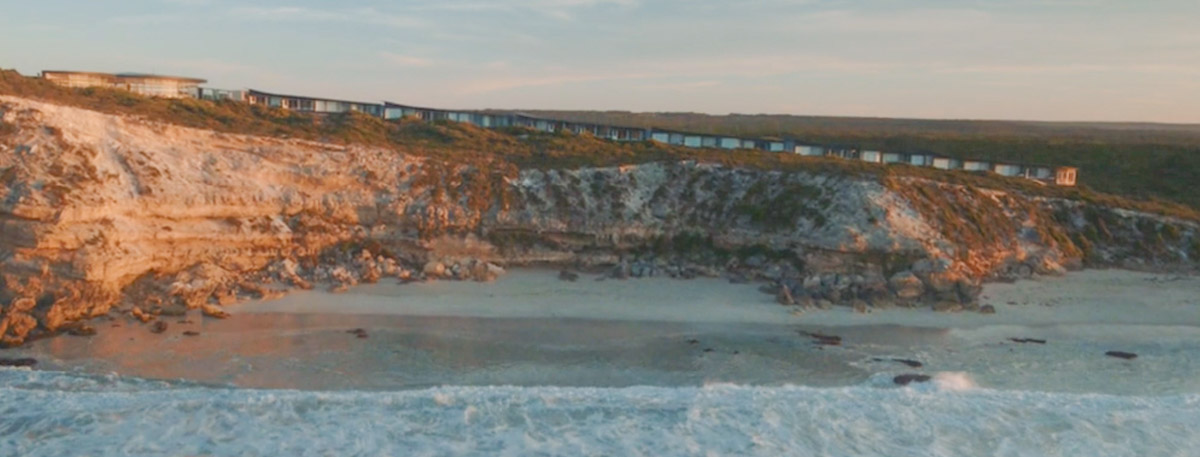
A very high end resort on the southwest coast, the Southern Ocean Lodge, sustained damage from the fire after guests were evacuated from the rooms that cost over $1,000 a night. Six senior staff members remained on site to monitor the situation and activate the sprinkler system designed to protect the structures. Photos taken before the fire show brush growing very close to structures at the facility.
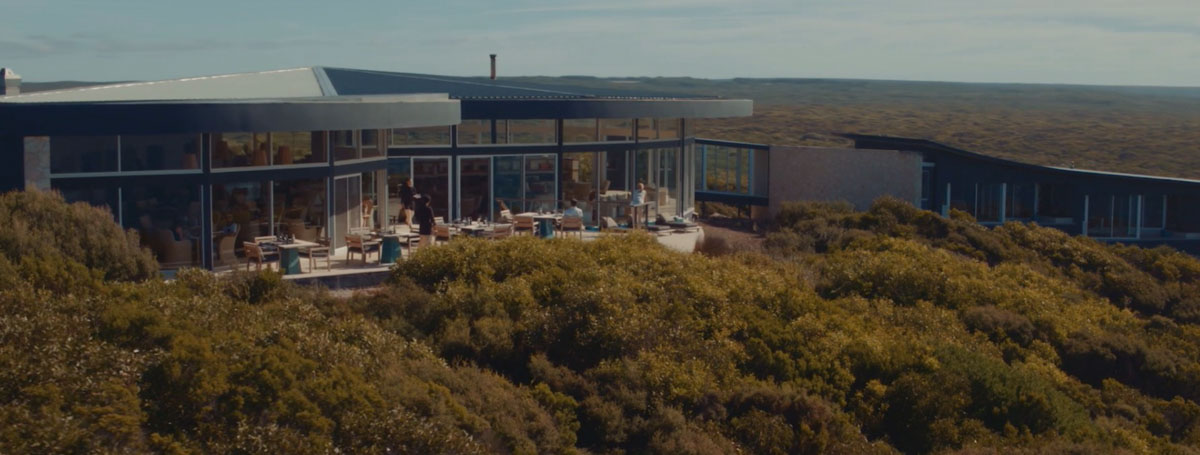
The lightning-caused fire is burning toward the town of Parndana in the center of Kangaroo Island, prompting officials to issue an evacuation order for the community.
The Australian Broadcasting Corporation is reporting that “up to 150,000 hectares” (370,000 acres) have burned in the fire. If accurate, that would be about half of the island.
On Friday a northwest wind was pushing the fire to the southeast, but by early Saturday (local time) a southwest wind was blowing the smoke over the mainland south of Adelaide. Relative humidity at Parndana is predicted to be 60 to 80 percent Saturday, which should slow the fire’s spread. In addition, much of the eastern half of the island is agricultural or ranch land with occasional stringers of trees, which would reduce fire’s resistance to control and the spotting potential.
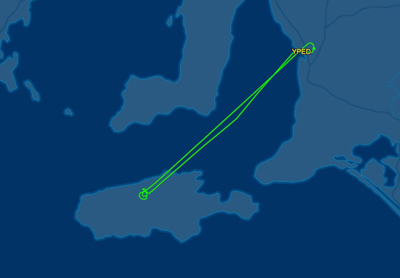
A 737 air tanker, Bomber 137, normally based this summer at Richmond, made several water or retardant drops on the fire Friday, reloading at RAAF Edinburgh near Adelaide.
Country Fire Service (CFS) deputy chief officer Andrew Stark said a decision will have to be made concerning the plans for cruise ships to arrive in the coming days, anchoring off the coast of Penneshaw on the east end of the island.